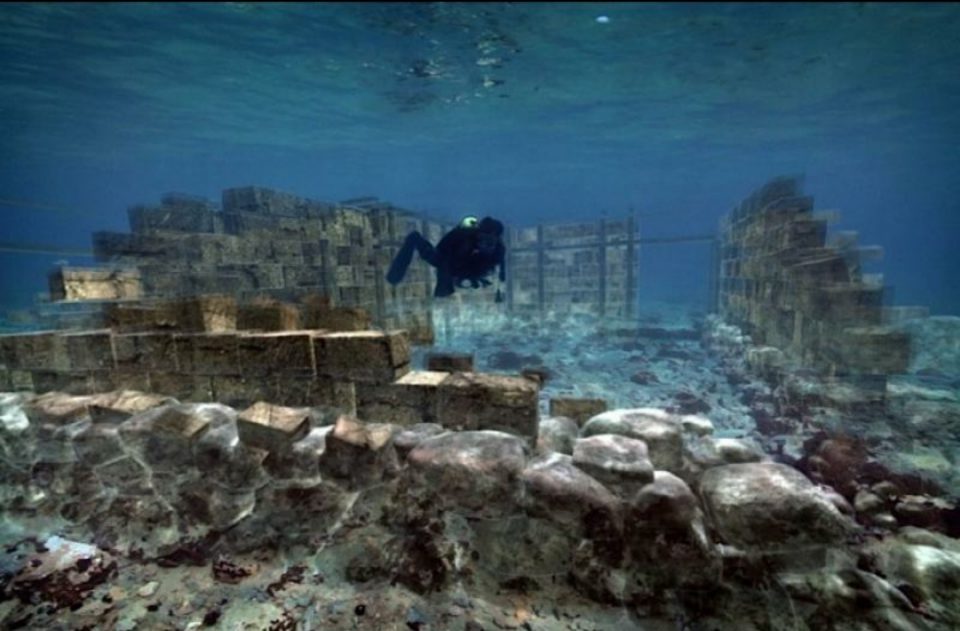A few meters below the surface of the water, next to a sandy beach on Vatika Bay in southeastern Peloponnese, Seabed between the island Elafonisos and beach Punta in southern Laconia lies the archaeological remains of the oldest submerged city in the world. Hidden from the view of mankind for more than 5000 years, helps to sketch how ancients lived.
This very Ancient city of Palvlopetri was first reported by geologist Fokion Negri in 1901. Then later in 1967 Oceanographer Dr. Nicholas Flemming and a team from the University of Southampton discovered the very existence of this city which was submerged 2-3 meter from the beach. The next immediate year Dr Nicholas Flemming, with a group of young archaeologists from the University of Cambridge returned to Pavlopetri and in collaboration with professor Angelos Delivorias, they mapped and dated the sunken city.
It is estimated that Pavlopetri is a Bronze Age city that was occupied from the third millennium until 1100 B.C.E. What makes it special is the surviving archaeological remains along with traces of buildings—including thresholds and lintels—and courtyards, streets, and burial places and 15 large buildings. From ordinary tableware to large Minoan jars have been found in recent surveys. These kinds of small details are the building block in constructing a whole picture of these bronze age peoples day to day life.
It is estimated that the sunken city was formed due to three catastrophic earthquakes which took place around 3000 BCE. Hence hiding its secrets for centuries, without any intervention from mankind.
This very scientific interest in Pavlopetri reveals many threats that this site faces these days. Huge ships anchoring in Vatika Bay, threatened the ancient city in many ways. From discharging of waste to chemicals released during cleaning is slowly damaging this age old city. Smaller boats too play its part by shifting the sediments which damages the walls. And few other modernised activities threaten what remains of this city. Public awareness has been conducted and campaigns have been raised to protect the remains of the city. In 2016, this Pavlopetri was added to the World Monument, helping the course of preservation.
Ancient remains are the only way to understand what our ancestors were, and helps to know our own origin. Therefore finding such sites and preserving it becomes our utmost responsibility and ultimately we preserve our own identity.

